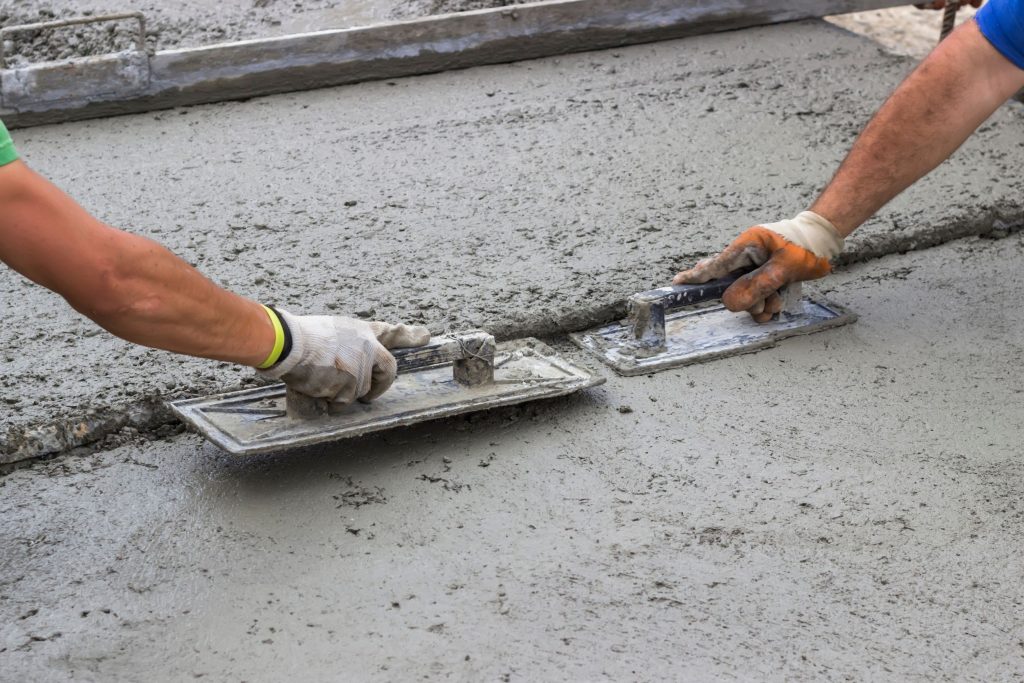Renovation projects transform existing structures and spaces. Among the myriad factors that contribute to renovation success, the often-underappreciated yet crucial element of concrete finishing emerges as a linchpin. Whether it’s a residential haven, a bustling commercial hub, or an industrial facility, the meticulous attention given to concrete finishing significantly influences the overall outcome of the renovation project.
Different concrete finishes can have a significant impact on a space’s aesthetics. For example, a polished finish can give the space a sleek and modern feel, while a more textured finish can add depth and interest. The choice of finish can also influence the mood and atmosphere of the space. Smooth finishes create a serene atmosphere, while textured finishes create a bold and rugged aesthetic.
Understanding concrete finishing
Concrete finishing is a nuanced process that extends beyond surface-level touch-ups. It is the meticulous art of refining and perfecting freshly poured concrete, encompassing steps such as leveling, smoothing, and texturing. This intricate process is not solely about aesthetics; it profoundly affects concrete’s durability, strength, and performance.
The impact of concrete finishing on the longevity of the structure cannot be understated. The meticulous process of leveling, smoothing, and texturing ensures that the concrete is adequately compacted and devoid of air pockets, enhancing its strength and durability. Additionally, the proper finish enhances the concrete’s ability to repel water and prevent cracking, leading to a longer lifespan for the structure.
Aesthetic Appeal
The visual impact of a renovated space is often the first aspect that captures attention. Concrete finishing, executed with finesse, can transform an ordinary surface into a captivating showcase. The palette of finishing techniques available, including exposed aggregate, stamped patterns, or smooth finishes, allows contractors to tailor the appearance to harmonize with the specific design vision and functional requirements of the renovation project.
Durability and Longevity
Beneath the apparent charm lies a more pragmatic advantage – the robustness imparted by quality concrete finishing. Well-executed finishing acts as a protective shield, protecting the surface from cracks, scaling, and other forms of deterioration. This sealing process mitigates the risk of water infiltration and chemical damage, ensuring that the renovated elements endure the test of time with resilience.
Different concrete finishing techniques offer unique benefits. For example, exposed aggregate finishing provides a rough texture that increases traction and is ideal for outdoor surfaces. Stamped patterns can create decorative and visually appealing finishes, suitable for residential and commercial projects. Smooth finishes, on the other hand, give a sleek and polished appearance that can enhance the overall aesthetics of a space. The choice of finishing technique should be based on factors such as the intended use of the space, design preferences, and budgetary considerations.
Functionality and Safety
Concrete finishing extends its influence beyond aesthetics and durability, actively contributing to enhanced functionality and safety within renovated spaces. The texture and slip resistance of the finished concrete surface can be customized to address specific needs. This is particularly true in areas with high foot traffic or exposure to environmental elements. This customization ensures that the renovated space boasts visual appeal and serves its intended purpose effectively and safely.
When Choosing a finishing technique for a residential project, it is important to consider the overall design and aesthetic goals of the space. Factors such as the intended use of the room, the desired appearance and ambiance, and the budget for the project should also be considered. Additionally, the functionality and safety aspects of the finishing technique should be taken into consideration, especially in areas such as the driveway or patio where increased traction is important.
Cost-Effective Renovation
Considered investments in high-quality concrete finishing during renovation projects yield substantial long-term benefits. The augmented durability and reduced maintenance requirements of well-finished concrete surfaces translate into lower repair and upkeep costs. This strategic choice makes it a financially prudent option for property owners seeking sustainable and financially viable renovation solutions.
Examples of sustainable and economically viable renovation solutions include using recycled materials, such as recycled glass or steel, in decorative concrete finishes. Another solution is to use a sealing product or coating that reduces the need for frequent cleaning and maintenance, reducing water and energy consumption. Additionally, implementing energy-efficient lighting systems or using eco-friendly cleaning materials can also contribute to sustainable and economically viable renovation solutions.
Environmental Considerations
In an era where sustainability is paramount, concrete finishing can align with eco-friendly practices. Incorporating recycled materials into finishing compounds or utilizing techniques that minimize environmental impact demonstrates a commitment to responsible construction practices. This makes the renovation project visually appealing and environmentally conscious.
Some techniques that minimize environmental impact in concrete finishing include applying water-based or low-VOC (volatile organic compounds) coatings and sealers, which have less harmful emissions than solvent-based products. Another technique is implementing sustainably sourced materials, such as fly ash or slag cement. This helps to reduce natural resources demand. Furthermore, using decorative techniques such as scoring or staining instead of excessive coatings can minimize waste and promote sustainability.
In conclusion, concrete finishing’s multifaceted role in renovation projects proves its significance. Beyond its immediate impact on aesthetics, concrete finishing intricately weaves together durability, functionality, cost-effectiveness, and environmental consciousness. Whether it’s a residential rejuvenation, a commercial metamorphosis, or an industrial overhaul, the careful consideration of its finishing ensures that the renovated structure not only captivates the eye but also weathers time with grace and longevity.
Using water-based or low-VOC coatings in concrete finishing reduces the harmful emissions released into the atmosphere compared to solvent-based products. This promotes better indoor air quality and contributes to a reduced environmental impact. Additionally, these coatings are less likely to contaminate water sources and contribute to the overall sustainability of the renovation project.

